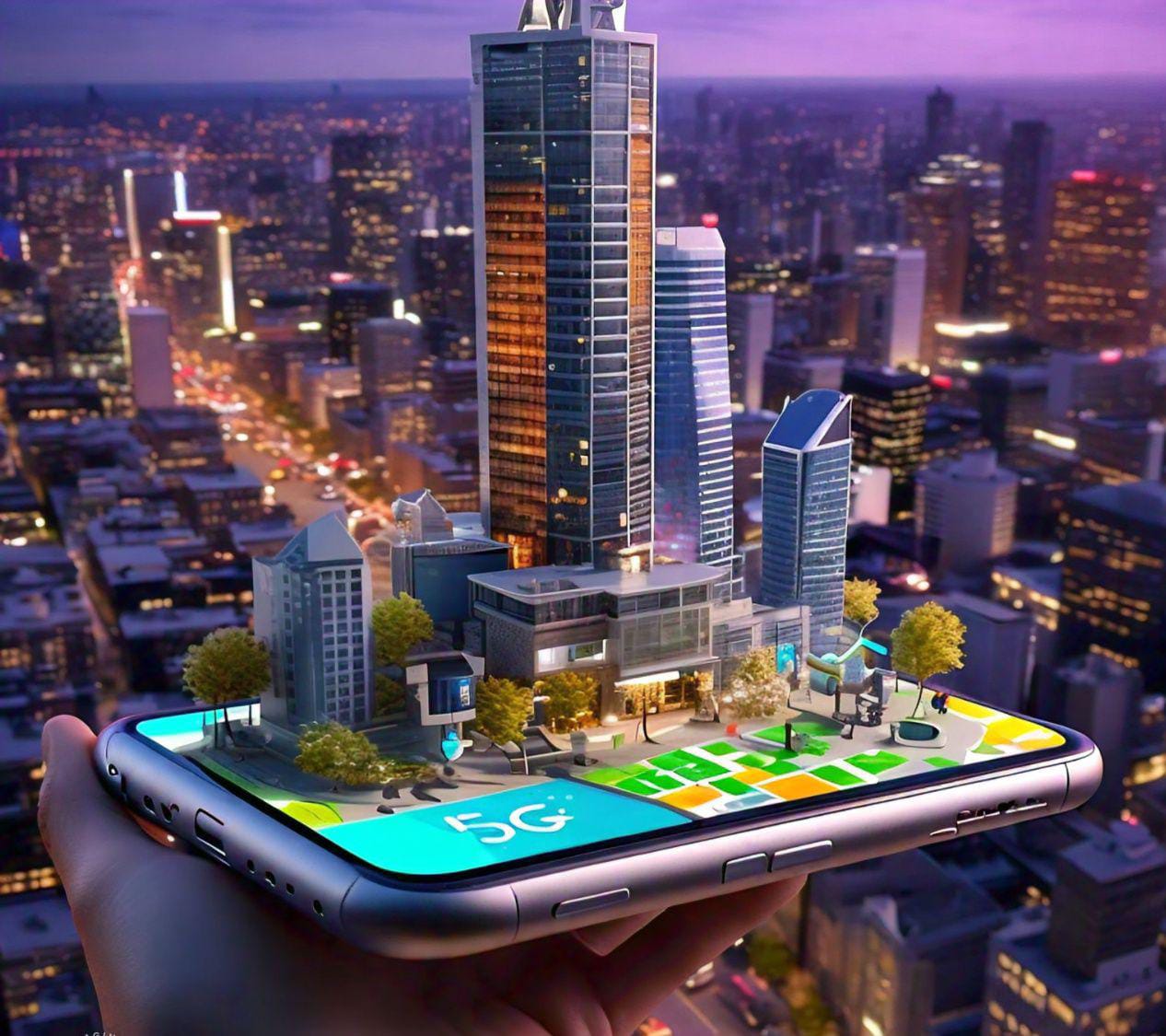5G’s Future: Transforming Connectivity and Beyond
Outline
- Introduction
- Importance of 5G
- Overview of 5G capabilities
- What is 5G?
- Definition and evolution from previous generations
- Key Features of 5G
- Speed
- Latency
- Capacity
- Reliability
- Current State of 5G Deployment
- Global adoption
- Challenges and limitations
- 5G and Internet of Things (IoT)
- Enhanced connectivity for smart devices
- Impact on smart homes and cities
- 5G in Healthcare
- Telemedicine advancements
- Remote surgery and diagnostics
- 5G and Autonomous Vehicles
- Real-time data processing
- Safety and efficiency improvements
- 5G in Entertainment
- Augmented and virtual reality
- Enhanced streaming services
- Industrial Applications of 5G
- Smart factories
- Improved logistics and supply chain management
- 5G and Artificial Intelligence (AI)
- Accelerating AI applications
- Enhancing machine learning capabilities
- Economic Impact of 5G
- Job creation
- Economic growth
- Security Concerns with 5G
- Potential vulnerabilities
- Measures to enhance security
- Future Innovations Driven by 5G
- Emerging technologies
- Long-term vision for 5G evolution
- Regulatory and Policy Considerations
- Government roles
- Standardization efforts
- Conclusion
- Recap of 5G potential
- Final thoughts on the future of 5G
Introduction
The advent of 5G technology is set to revolutionize the way we connect, communicate, and interact with the world around us. With its promise of lightning-fast speeds, ultra-low latency, and unprecedented capacity, 5G is poised to unlock new possibilities and drive innovation across various industries. As we stand on the brink of this technological leap, it’s essential to explore what 5G is, its current state, and the transformative impact it will have on our future.
What is 5G?
5G, short for the fifth generation of wireless technology, is the latest advancement in mobile networks, succeeding 4G LTE. Unlike its predecessors, 5G offers significantly higher speeds, reduced latency, and greater capacity, making it a game-changer for both consumers and businesses. While 4G brought us the era of smartphones and mobile internet, 5G is set to usher in a new age of connected devices and immersive experiences.
Key Features of 5G
Speed
One of the most notable features of 5G is its incredible speed. With peak download speeds reaching up to 10 gigabits per second, 5G is capable of delivering data at rates 100 times faster than 4G. This means downloading a full-length HD movie can be done in mere seconds.
Latency
Latency, or the time it takes for data to travel from one point to another, is drastically reduced with 5G. While 4G networks have a latency of around 50 milliseconds, 5G can achieve latencies as low as 1 millisecond. This near-instantaneous communication is critical for applications that require real-time responses.
Capacity
5G also boasts enhanced capacity, allowing it to support a vast number of devices simultaneously. This is especially crucial since there are an increasing amount of linked devices—from tablets and smartphones to Internet of Things devices—in the world.
Reliability
Reliability is another key advantage of 5G. With its advanced technology, 5G networks are designed to provide stable and consistent connections, even in densely populated areas.
Current State of 5G Deployment
Global Adoption
The deployment of 5G is well underway across the globe. Countries like the United States, South Korea, China, and many parts of Europe have already launched 5G networks, with ongoing efforts to expand coverage and improve infrastructure.
Challenges and Limitations
Despite its potential, the rollout of 5G faces several challenges. High deployment costs, regulatory hurdles, and the need for significant infrastructure upgrades are among the primary obstacles. Additionally, ensuring widespread coverage, particularly in rural areas, remains a critical concern.
5G and Internet of Things (IoT)
Enhanced Connectivity for Smart Devices
One of the most exciting aspects of 5G is its ability to supercharge the Internet of Things (IoT). With its high speed and low latency, 5G can connect a vast array of smart devices seamlessly, from home appliances to industrial sensors.
Impact on Smart Homes and Cities
In smart homes, 5G enables more efficient and responsive systems, such as lighting, security, and climate control. On a larger scale, smart cities can leverage 5G to improve urban planning, traffic management, and public safety, creating more sustainable and livable environments.
5G in Healthcare
Telemedicine Advancements
The healthcare industry would greatly benefit from 5G. Telemedicine, which gained prominence during the COVID-19 pandemic, will be further enhanced by 5G’s high-speed and reliable connections, allowing for real-time consultations and remote monitoring.
Remote Surgery and Diagnostics
5G also opens the door to remote surgery and diagnostics. Surgeons can perform operations from miles away using robotic systems, thanks to the low latency and high precision of 5G networks. Similarly, diagnostic procedures can be conducted remotely, providing access to expert care regardless of location.
5G and Autonomous Vehicles
Real-Time Data Processing
Autonomous vehicles rely on real-time data processing to navigate and make decisions. 5G’s low latency ensures that these vehicles can receive and process information almost instantaneously, improving their safety and efficiency.
Safety and Efficiency Improvements
With 5G, autonomous vehicles can communicate with each other and with infrastructure, reducing the risk of accidents and optimizing traffic flow. This leads to safer roads and more efficient transportation systems.
5G in Entertainment
Augmented and Virtual Reality
The entertainment industry is set to be transformed by 5G, particularly in the realms of augmented reality (AR) and virtual reality (VR). With its high speed and low latency, 5G can deliver immersive and interactive experiences, making gaming and media consumption more engaging than ever.
Enhanced Streaming Services
Streaming services will also benefit from 5G’s capabilities. Viewers can enjoy high-quality video content with minimal buffering, and new features like interactive and multi-angle streaming can be introduced.
Industrial Applications of 5G
Smart Factories
In the industrial sector, 5G enables the creation of smart factories, where machines and systems are interconnected and can communicate in real-time. Increased automation, effectiveness, and productivity follow from this.
Improved Logistics and Supply Chain Management
5G can also enhance logistics and supply chain management by providing real-time tracking and monitoring of goods. This ensures timely deliveries and reduces losses, improving overall efficiency.
5G and Artificial Intelligence (AI)
Accelerating AI Applications
5G’s high-speed connectivity accelerates the development and deployment of AI applications. From real-time data analysis to advanced machine learning algorithms, 5G provides the necessary infrastructure for AI to thrive.
Enhancing Machine Learning Capabilities
Machine learning models can be trained and deployed more efficiently with 5G, leading to more accurate predictions and better decision-making across various industries.
Economic Impact of 5G
Job Creation
The rollout of 5G is expected to create millions of jobs worldwide, from network installation and maintenance to the development of new applications and services.
Economic Growth
By enabling new technologies and improving efficiency, 5G is poised to drive significant economic growth. Industries such as healthcare, manufacturing, and transportation will see substantial gains from 5G adoption.
Security Concerns with 5G
Potential Vulnerabilities
With its widespread deployment, 5G also brings new security challenges. The increased number of connected devices and the complexity of the network can create potential vulnerabilities.
Measures to Enhance Security
To mitigate these risks, robust security measures are essential. This includes advanced encryption, continuous monitoring, and the development of secure protocols to protect data and maintain privacy.
Future Innovations Driven by 5G
Emerging Technologies
5G will serve as a catalyst for emerging technologies, from next-generation robotics to advanced biotechnology. The possibilities are vast and varied, with 5G providing the foundation for innovation.
Long-Term Vision for 5G Evolution
As 5G continues to evolve, we can expect even greater advancements. Future iterations of 5G technology will bring improvements in speed, capacity, and reliability, further expanding its impact.
Regulatory and Policy Considerations
Government Roles
Governments play a crucial role in the deployment and regulation of 5G. By creating supportive policies and providing funding for infrastructure, they can facilitate the widespread adoption of 5G technology.
Standardization Efforts
Standardization is key to ensuring the compatibility and interoperability of 5G networks. International cooperation and the development of universal standards are essential for the global success of 5G.
Conclusion
The future of 5G is incredibly promising, with the potential to transform every aspect of our lives. From enhancing connectivity and driving technological innovation to boosting economic growth and improving quality of life, 5G is set to be a cornerstone of the digital age. As we continue to explore and harness its capabilities, the impact of 5G will only grow, paving the way for a more connected and advanced world.
FAQs
- What distinguishes 4G from 5G in particular?
- The primary difference is speed. 5G offers significantly higher speeds, lower latency, and greater capacity compared to 4G.
- How will 5G impact everyday life?
- 5G will enhance everyday life by improving the performance of mobile devices, enabling smart homes and cities, and supporting new technologies like AR, VR, and autonomous vehicles.
- What industries will benefit most from 5G?
- Industries such as healthcare, automotive, entertainment, and manufacturing will benefit significantly from 5G technology.
- Are there any health concerns associated with 5G?
- Current scientific evidence does not support claims that 5G poses health risks. Regulatory bodies continue to monitor and research the safety of 5G technology.
- When will 5G be widely available?
- 5G is already being deployed in many parts of the world, with broader availability expected over the next few years as infrastructure is expanded.








